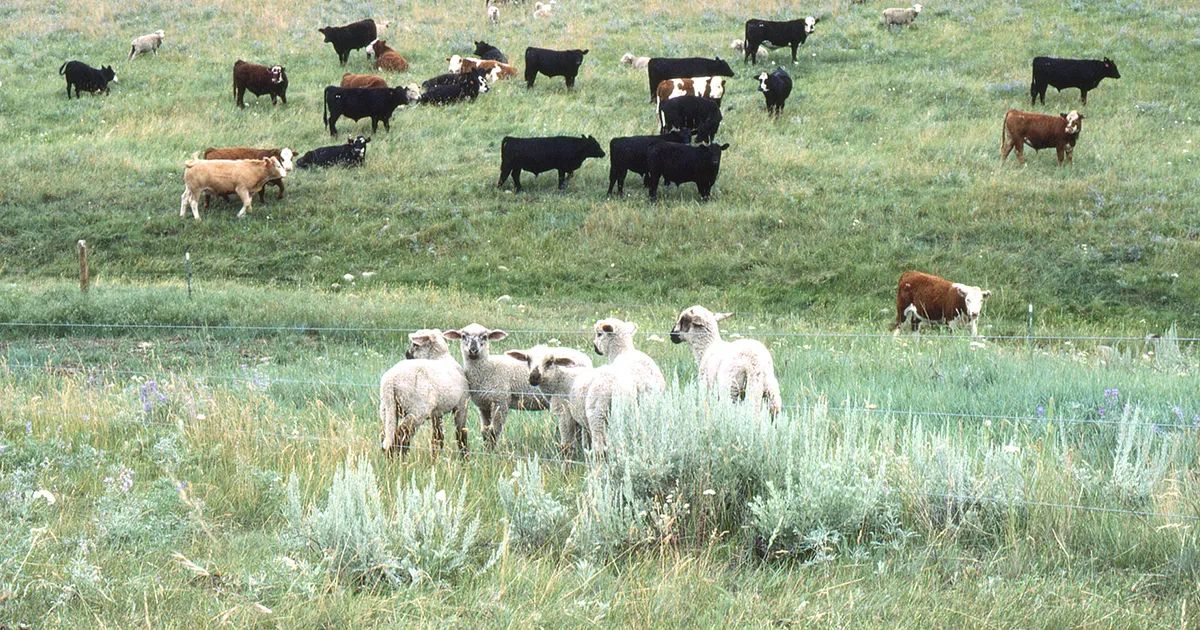
ASI and NCBA Release Guidance Criteria for Livestock Grazing on Public Lands During FMD Outbreak
April 11, 2024
Managing livestock grazing on federal public lands in a foot-and-mouth disease (FMD) outbreak will pose unique challenges for ranchers and animal health officials. That is why the American Sheep Industry Association (ASI) received USDA National Animal Disease Preparedness and Response Program (NADPRP) funding to work with the National Cattlemen’s Beef Association (NCBA) and other stakeholders to develop movement decision criteria guidance that addresses the unique scenarios that would arise for federal lands grazers. Resources are now available on the Secure Sheep and Wool Supply and Secure Beef Supply websites under the Public Land Grazing pages.
“With about half of the U.S. ewe inventory that seasonally graze on permitted federal grazing lands, this project provides needed information for ranchers and decision makers,” said ASI President Brad Boner. “The rancher’s and other stakeholder involvement on the Advisory Group is greatly appreciated. Their input helped ensure the guidance created represented the realities and capabilities of this important sector of our industry.”
“Having raised cattle on both public and private land for almost my entire life, I know firsthand how important Western cattle production is to the national industry, and how complicated disease preparedness can be when we start talking about federal grazing allotments,” said NCBA President Mark Eisele. “For the first time, there are now resources that specifically consider those unique challenges and give detailed guidance to producers ranching on federal lands.”
An effective FMD response involving federal public lands will require interagency collaboration. Together, ASI and NCBA assembled an Advisory Group of federal public land grazing stakeholders. Guidance that is now posted on the websites above was developed through two years of virtual and in person meetings with sheep and cattle producers who hold federal grazing permits, the Public Lands Council, State Animal Health Officials, Bureau of Land Management, U.S. Forest Service, U.S. Fish and Wildlife Service, USDA Wildlife Services, and USDA Animal and Plant Health Inspection Service (APHIS).
This guidance provides resources to livestock producers to voluntarily prepare before an FMD outbreak. Using “real time” scenario exercises, guidance was improved to provide decision makers with necessary information to ensure animal needs and response goals are met. Some decision criteria include assessing adequate feed/water, mitigating interactions with wildlife, and implementing just-in-time biosecurity. More information is available in the Movement Decision Criteria for Industry and Regulatory Officials Managing Cattle and Sheep Grazing Federal Public Lands during an FMD Outbreak document.
A webinar, hosted by USDA, will be held on May 13 at 2pm EST with presentations by ASI and NCBA describing this project and resources. Register today at: https://www.zoomgov.com/j/1601496343
ASI and NCBA appreciate the time and effort put in by the Advisory Group as well as Dr. Danelle Bickett-Weddle, consultant with Preventalytics, in the creation of materials. ASI and NCBA each provide unique resources for sheep and cattle producers to prepare for, respond to, and enhance their resiliency for an FAD event. This collaboration across the sheep and cattle industries with state and federal partners demonstrates impactful results to secure business continuity and a safe food supply.
Background
The U.S. is currently free of the FMD virus. The Secure Sheep and Wool Supply (SSWS) Plan and Secure Beef Supply (SBS) Plan for continuity of business provides opportunities for industry partners to voluntarily prepare before an FMD outbreak. If FMD were found in U.S. livestock, regulatory officials will limit the movement of animals and animal products to try and control the spread of this very contagious animal disease. During this time, control areas will be established around infected premises and movement restrictions will be implemented. Given the nature of federal lands grazing, containment of livestock and mitigation of risk will require different strategies than private land containment measures. When the control areas encompass part or all of a public land grazing allotment, in one or more states, there are unique challenges for sheep and cattle producers to mitigate disease exposure risks. FMD is not a threat to public health or food safety.
Source: ASI & NCBA










